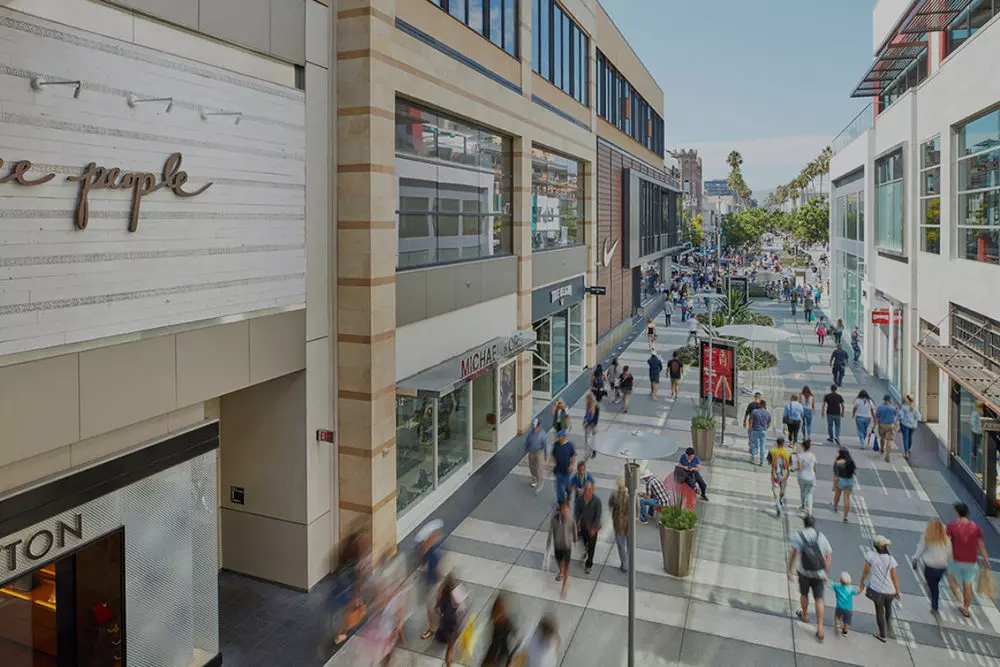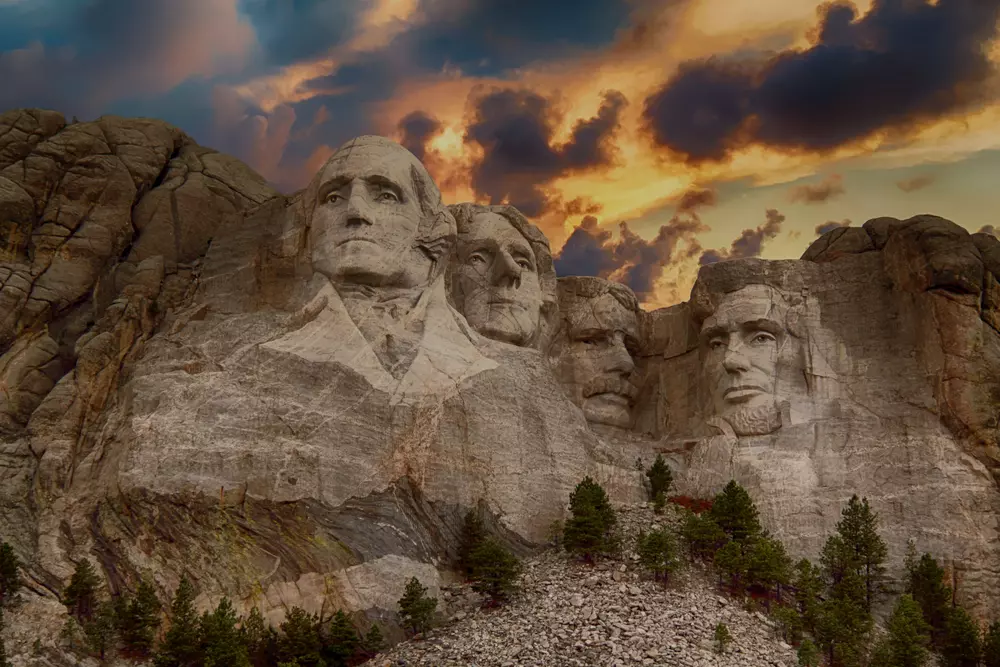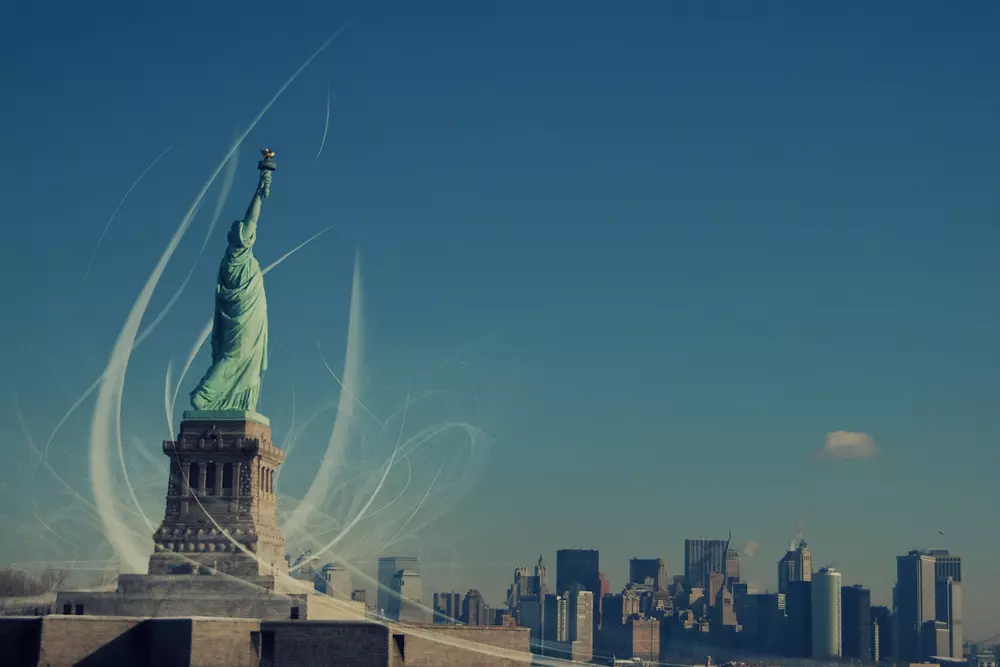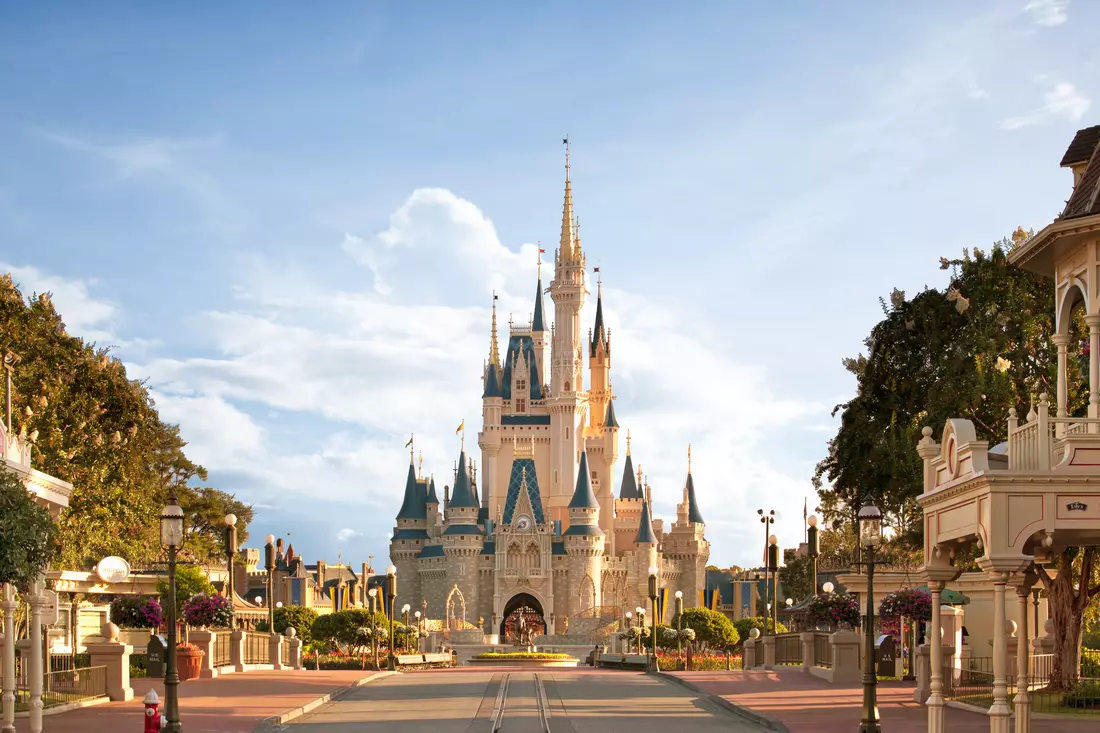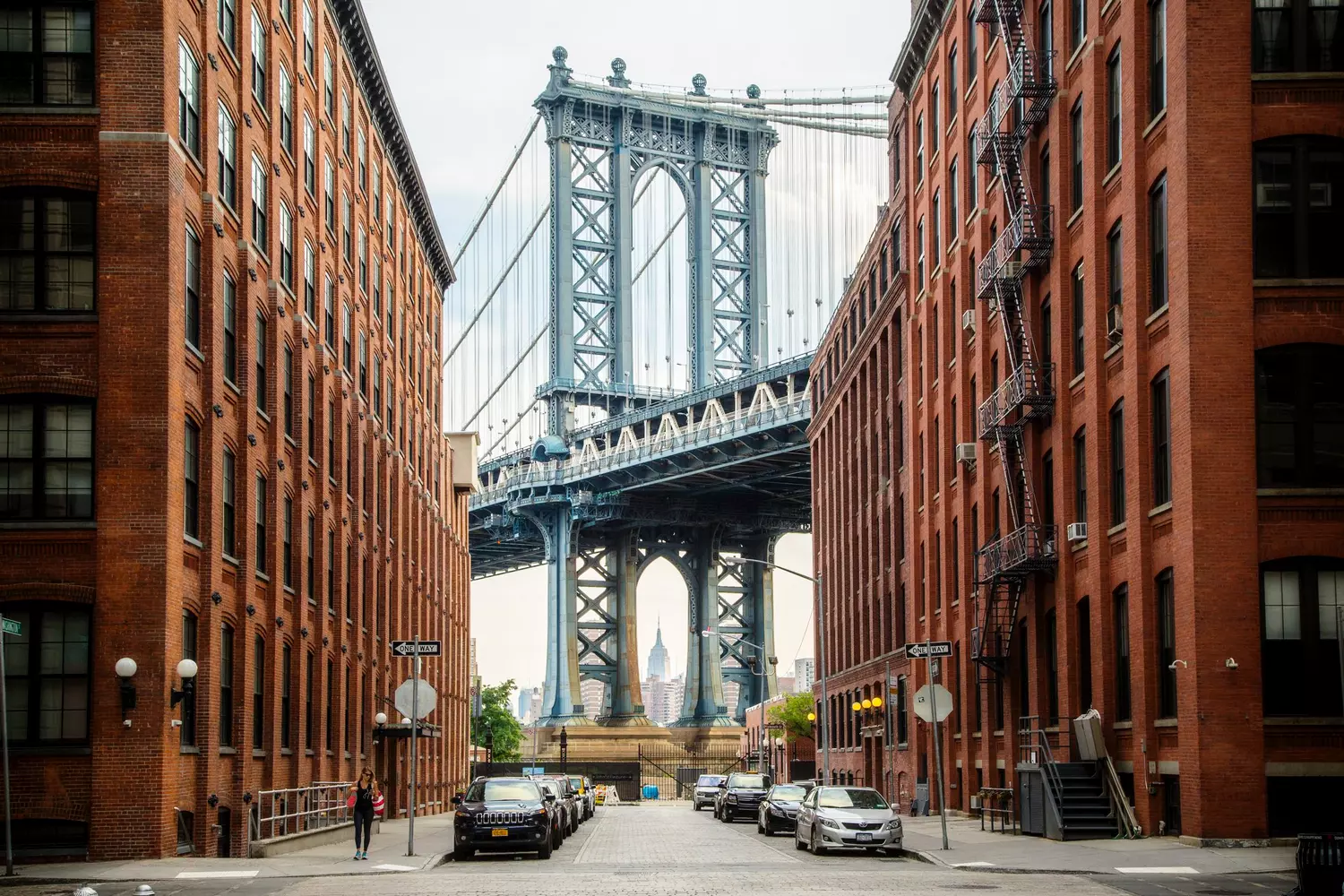America has always reached upward — in ideas, technology, and buildings. In the USA, a skyscraper is not just architecture; it is a symbol of dreams, ambitions, and time. These giants have become an integral part of cityscapes and living history.
They were built during times of economic growth and amid the harshest crises. They endured terror attacks, changing eras, governments, and climates. Yet they kept rising. Every new skyscraper is a challenge not only to gravity but to the very notion of “possible.”
Why does it matter? Because skyscrapers are more than just concrete and steel. They are portraits of their cities. When you look at the skyline of New York or Chicago, you don’t just see buildings — you see the ambitions of dozens of generations. Dreams embedded in glass.
The USA was a pioneer in high-rise construction. The idea of the steel frame was born here. The first passenger elevator in a skyscraper also appeared here. America made verticality a way to live, work, and get inspired.
In this article, we will tell you about the ten tallest skyscrapers in the country — not in a dry, formulaic way, but with interesting details, facts, and the spirit of true America. From the legendary Empire State Building to the ultra-modern giants of Manhattan — this is not just a list, but a living history you can see with your own eyes.
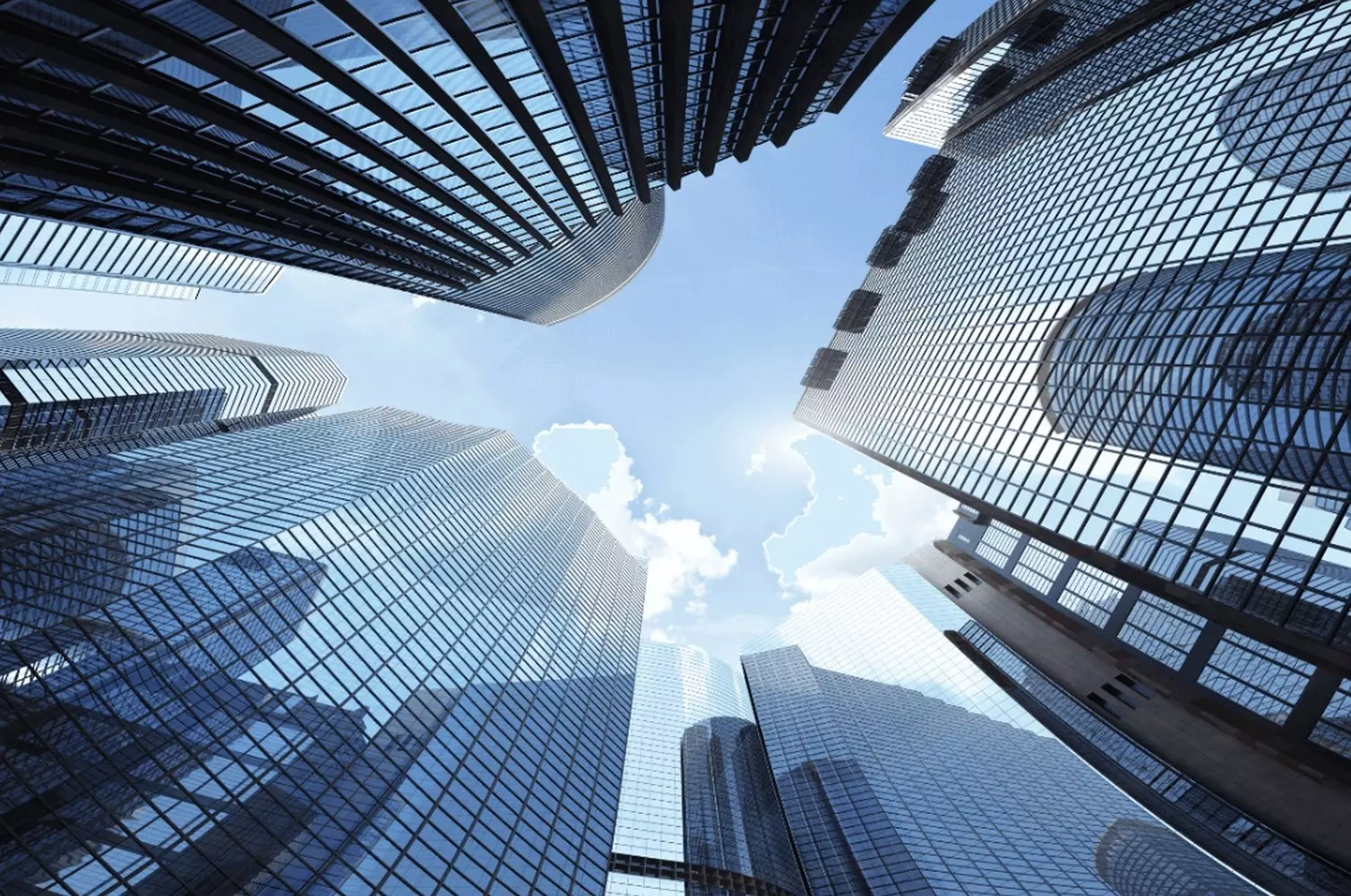
Do you know why there are so many thin and slender skyscrapers in New York? It's the result of a tax loophole. The smaller the building’s footprint at ground level, the lower the tax. Architects quickly realized: it's more profitable to build upward.
How Skyscrapers Were Born: From Idea to Reality
Skyscrapers are not just a product of ambition. They are a response to a challenge. And it all started… with a shortage of land.
Historically, the first capital of skyscrapers was Chicago. It was there that in 1885 the Home Insurance Building appeared — only 10 floors, but it was a breakthrough. Why? Because for the first time in history, the building was supported not by bricks, but by a steel frame. This allowed construction to go higher, faster, and safer.
The second half of the 19th century was a time of economic growth in the USA. Cities were growing, populations increasing, but land in the center was shrinking. A logical question arose: if you can’t build wider — you have to build higher. Why especially in the USA?
- Rapidly growing megacities
New York and Chicago were developing rapidly, and developers fought for every square foot. - Technical breakthroughs
Engineers invented elevators (thanks to Mr. Otis!) and reliable water supply systems for height. - Money and daring
America has always been a country of startups, including in architecture. Financiers wanted to invest in something grand.
Interesting fact: The word "skyscraper" was initially used for tall ship masts, and later for buildings — because, like masts, they soared towards the sky.
New York picked up the baton in the early 20th century. It was here that giants began to rise — from the Woolworth Building to the Empire State Building. The city, with its limited space on Manhattan, was literally forced to reach upward. Skyscrapers became symbols of status, power, and technological progress. They adorned postcards, films, and magazine covers.
Today, skyscrapers in the USA represent not only vertical growth but also intellectual growth: sustainability, eco-friendliness, and the symbiosis of design and engineering.
America has always reached upward — in ideas, technology, and buildings. In the USA, a skyscraper is not just architecture but a symbol of dreams, ambitions, and time. These giants have become an integral part of city landscapes and living history.
Height as an Idea: Why Have Skyscrapers Become a Symbol of America?
Skyscrapers are not just architectural giants decorating the skyline. They are a manifesto — social, economic, and cultural. And it is in the USA that this idea gained scale, strength, and meaning.
- 01. They Reflect the Spirit of the Times
When Chicago built the Home Insurance Building in 1885, it was only ten stories tall. But it was an engineering revolution. America proved that you don’t have to limit yourself to two or three floors — you can think vertically. Each wave of skyscraper construction in the USA was accompanied by a new phase of the country’s development:
- 1920s: The boom of jazz, automobiles, and of course, the Empire State Building.
- 1950s–70s: Growth of the corporate world and office towers.
- 2000s: Architecture after the tragedy of 9/11, as a way to restore faith in the future.
- 02. They Unite Everything and Everyone
A modern skyscraper is a city within a city. It can include offices and business centers, luxury apartments, five-star hotels, restaurants, galleries and boutiques, observation decks, and public spaces.
This combination makes the buildings functional and convenient for both tourists and city residents. This is especially important for cities like New York, where every square meter of land is worth its weight in gold. - 03. They Reshape Cities
Before skyscrapers appeared, New York was a port trading center, and Chicago was a logistics hub. But the arrival of vertical structures literally changed the face of these cities:
- New districts emerged, such as Midtown and Hudson Yards;
- The number of business and residential properties within a single block increased;
- City centers became recognizable by their building silhouettes.
Skyscrapers created a new urban aesthetic that was exported worldwide.
- 04. They Inspire
Millions of tourists annually visit observation decks, take selfies with the Empire State or One World Trade Center. For some, it’s an emotional experience; for others, architectural admiration; for some, a dream to live in such a building.
From Chicago to New York — these buildings don’t just reach for the sky, they conquer it. They are architectural symbols of strength, daring, and progress. Each one is an engineering marvel, a cultural context, and a mark of its era.
Ahead is a selection of the ten tallest skyscrapers in the USA: with facts, stories, and reasons why they became more than just buildings.
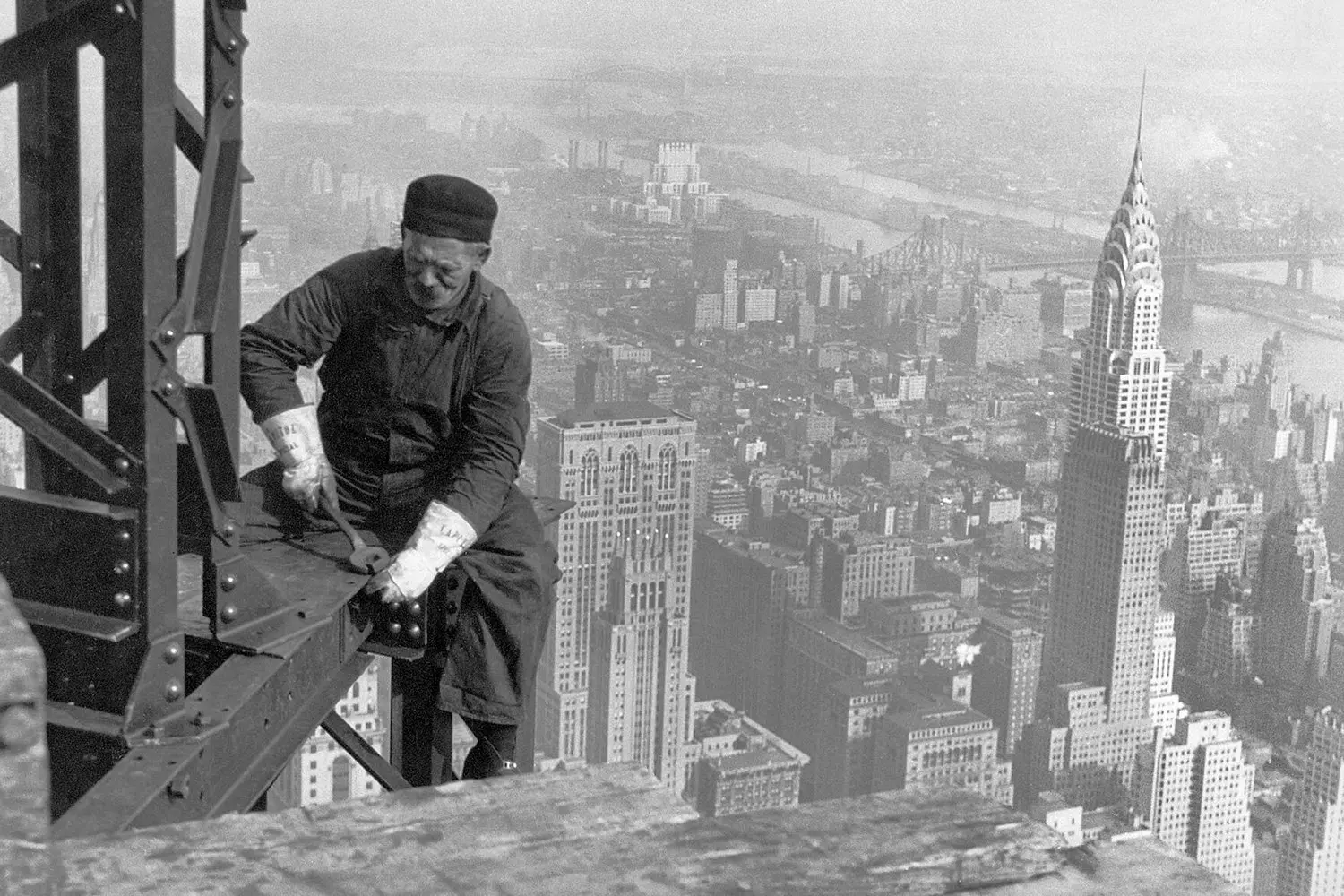
One World Trade Center (New York) — A Symbol of a Reborn Nation
One World Trade Center is not just the tallest skyscraper in the USA. It is an architectural monument to resilience, memory, and a new beginning. The building was constructed on the site of the destroyed Twin Towers, and every detail is filled with deep meaning.
- Height — 541 meters (1,776 feet). The number is no accident. It refers to 1776, the year the Declaration of Independence was signed. Thus, the building is not only the tallest in the country but also a symbol of the national spirit.
- Floors: 104
- 01. How It Was Built
Construction began in 2006 and lasted almost ten years. The project was under close scrutiny — not only from professionals but from the entire world. Families of the victims, architects, psychologists, and community organizations all took part in discussions. The result is a building that combines safety, aesthetics, and a profound emotional message.
- Its facade is made of reinforced glass and steel, reflecting the sky and city — as if the skyscraper dissolves into the air.
- Internal safety systems were designed taking into account all the lessons of September 11: additional stairwells, air filtration, and blast protection.
- 02. What’s Inside
The lower floors house the 9/11 Museum, business zones, and art spaces. At the top is the heart of the tower — the One World Observatory.
- The high-speed Sky Pod elevator will take you here in seconds; its walls are digital screens showing how Manhattan has changed over the past 500 years.
- From more than 380 meters high, there is a panoramic view covering the entire area — from the Statue of Liberty to the Brooklyn Bridge.
- A special platform allows you to "look through the floor" — transparent glass underfoot enhances the experience.
- 03. Why You Should Visit
- It’s not just an observation deck — it’s a journey through emotions, memory, and pride.
- You will feel that America not only remembers but also knows how to move forward.
- Here, history comes alive — not in a textbook, but right before your eyes.
"We are not just building a building. We are building a symbol. And it must be worthy." — David Childs, chief architect of the project.
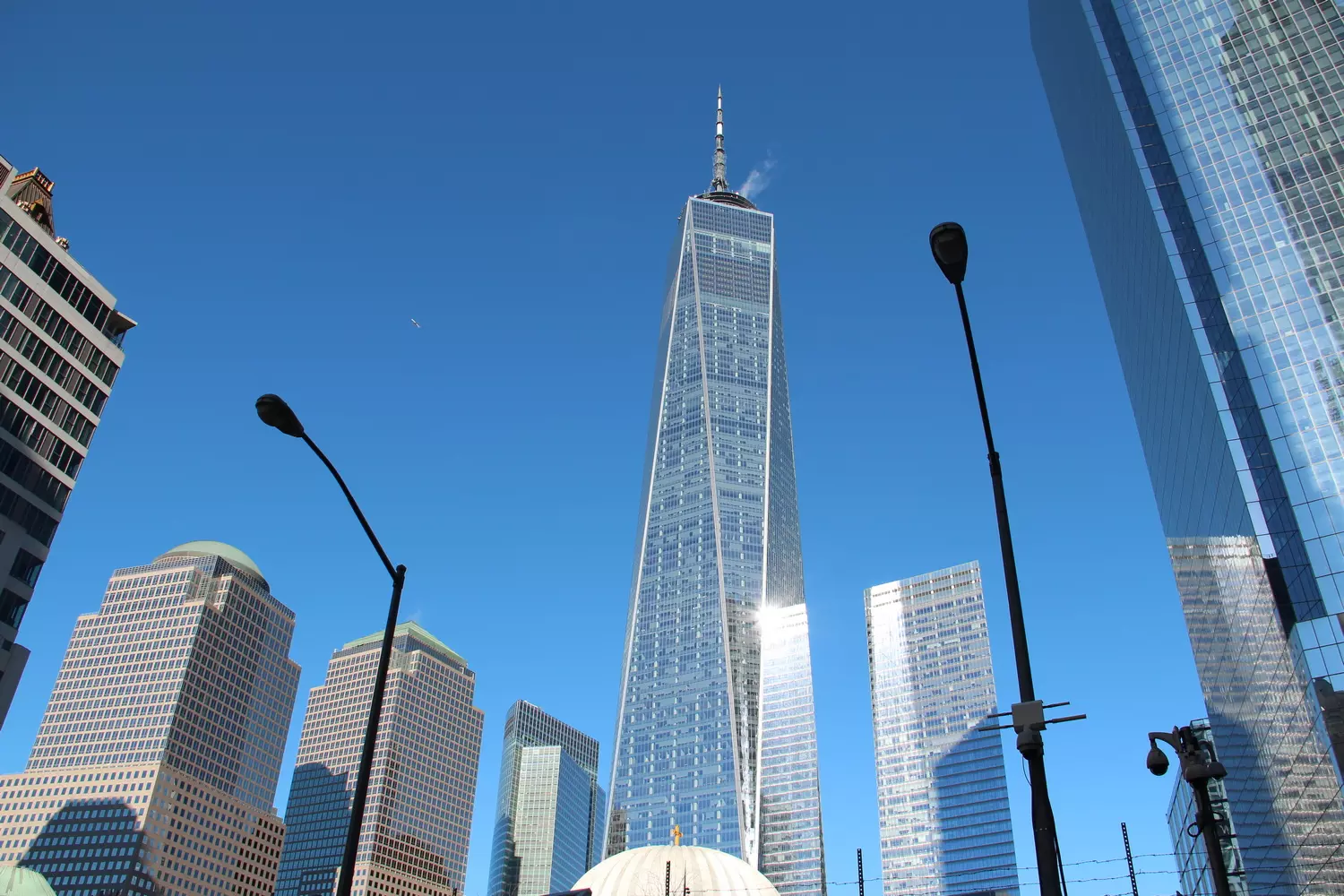
Central Park Tower (New York) — The Tallest Residential Building on the Planet
Central Park Tower is an architectural declaration of luxury, innovation, and vertical living. As of 2025, the building is officially recognized as the tallest residential skyscraper in the world, and this is not just a status — it’s a challenge to the laws of engineering and imagination.
- Height: 472 meters
- Purpose: luxury residences with hotel elements and a “city within a tower” infrastructure
- Status: the tallest residential building in the world (2025)
- 01. Architecture and Concept
The project was developed by the architectural firm Adrian Smith + Gordon Gill — the same masters behind the Burj Khalifa in Dubai. The goal was not just to build tall but to do so elegantly and functionally despite Manhattan’s extreme height and dense development.
- The building uses innovative damping systems to smooth out wind-induced sway.
- The facade is clad in glass and anodized metal, reflecting the sky and park like a water surface.
- Access to residences is through a private lobby overlooking Central Park and Fourth Avenue.
- 02. What’s Inside?
Central Park Tower offers residents a level of comfort comparable only to a five-star resort:
- Private Central Park Club with a lounge, library, pool, and terrace at 300 meters;
- Panoramic views of all Manhattan, the Hudson River, and the Atlantic — through floor-to-ceiling windows;
- Concierge services, spa, fitness center, tasting rooms, private restaurant, and even a concert hall.
- 03. Price and Availability
Residences in Central Park Tower are not just homes, but investments in status:
- Starting price — from $6 million;
- Penthouses can cost more than $100 million;
- Some apartments are purchased completely anonymously, via offshore funds.
- 04. Why You Should See It in Person
- It’s a chance to glimpse the future of high-rise luxury;
- A unique opportunity to understand what life looks like at heights once reachable only by clouds;
- Central Park beneath you, all of New York at your feet — and you stand at the epicenter of the planet’s elite lifestyle.
Interesting fact: The tower is located on the so-called “Billionaires’ Row” — 57th Street in New York is considered the most expensive street in the world for residential real estate.
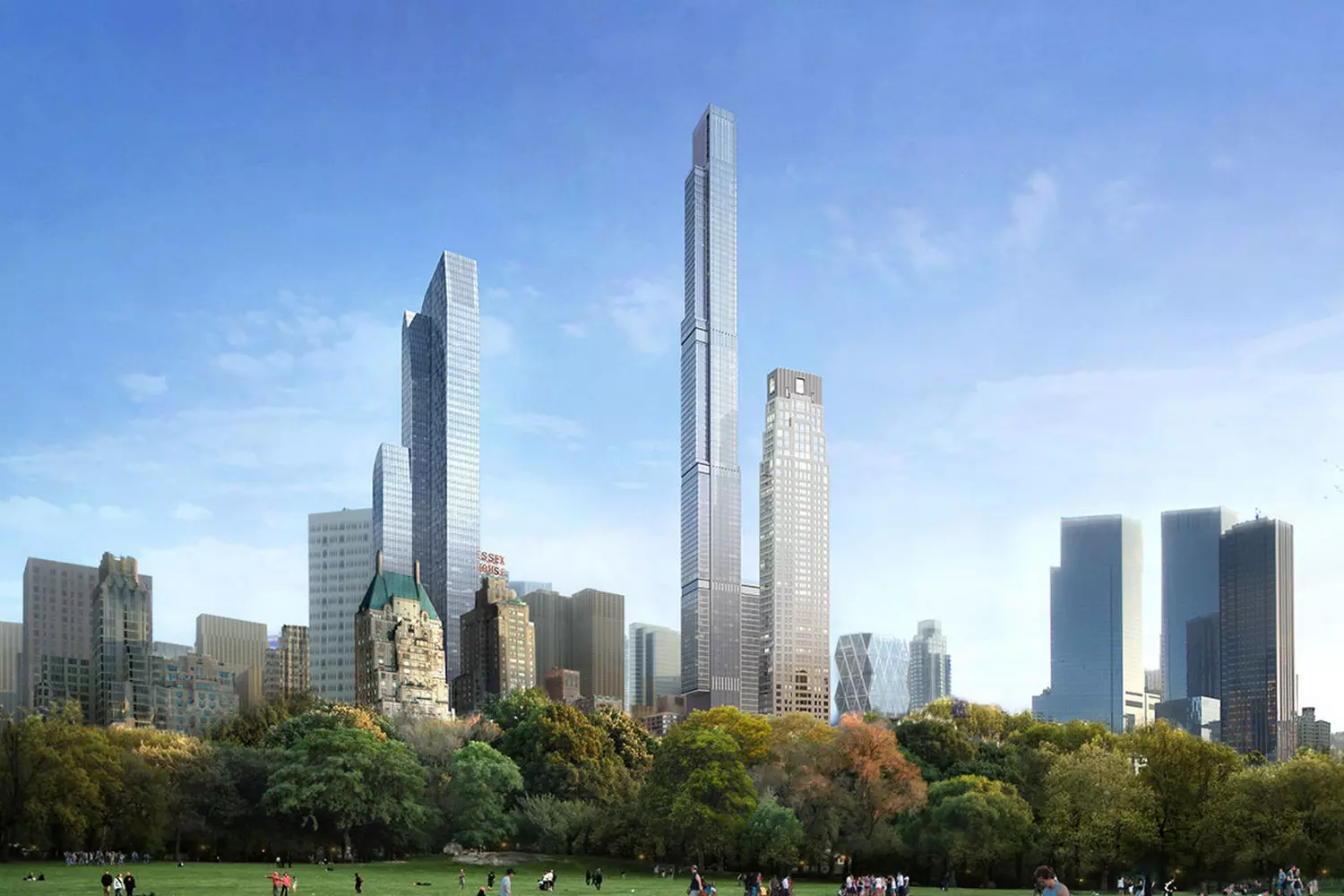
Willis Tower (formerly Sears Tower, Chicago) — The Tower That Defined an Era
Willis Tower, still called by many its old name — Sears Tower, — is not just a skyscraper. It is an icon of Chicago, an engineering marvel, and a building that held the title of the tallest in the world for 25 years. Built in 1973, the tower set the standard for what an American metropolis can be vertically for decades ahead.
- Height: 442 meters (527 meters with antennas)
- Floors: 110
- Architectural firm: Skidmore, Owings & Merrill
- 01. How It Came to Be
In 1969, Sears, Roebuck & Co. — then the largest retail giant in the USA — decided to build a headquarters. Not just an office, but the tallest office in the world. The idea was not only to impress but to centralize more than 300 employees from various divisions in one building.
Architect Bruce Graham and engineer Fazlur Rahman Khan proposed a radical solution: a structure of nine “tubes” combined into a single tower. This approach was revolutionary — it allowed building higher and more stable than ever before. - 02. Skydeck and Glass Capsules
The most famous part of the tower today is Skydeck Chicago — an observation deck on the 103rd floor. From here, you can see breathtaking views of Illinois, Wisconsin, Indiana, and even Michigan. But the highlight is The Ledge: four glass capsules that extend more than a meter beyond the building’s edge. The floor is also glass. A literal step into the void.
- Not for the faint-hearted: the feeling that you’re floating over the streets of Chicago at a height of over 400 meters.
- Photos come out otherworldly — especially at sunset or on a cloudy day when the city is immersed in clouds.
- 03. Why You Should Visit
- It’s one of the few towers where you don’t just feel height, but the grandeur of 20th-century engineering genius.
- Locals are proud of the building despite the name change. For Chicagoans, it’s still Sears — a symbol of the city’s former power.
- The atmosphere on the Skydeck is almost cosmic. It’s not just a view, it’s an emotional experience.
Interesting fact: during construction, Sears Tower surpassed even the World Trade Center towers in New York in height. It was a true architectural triumph of the Midwest.
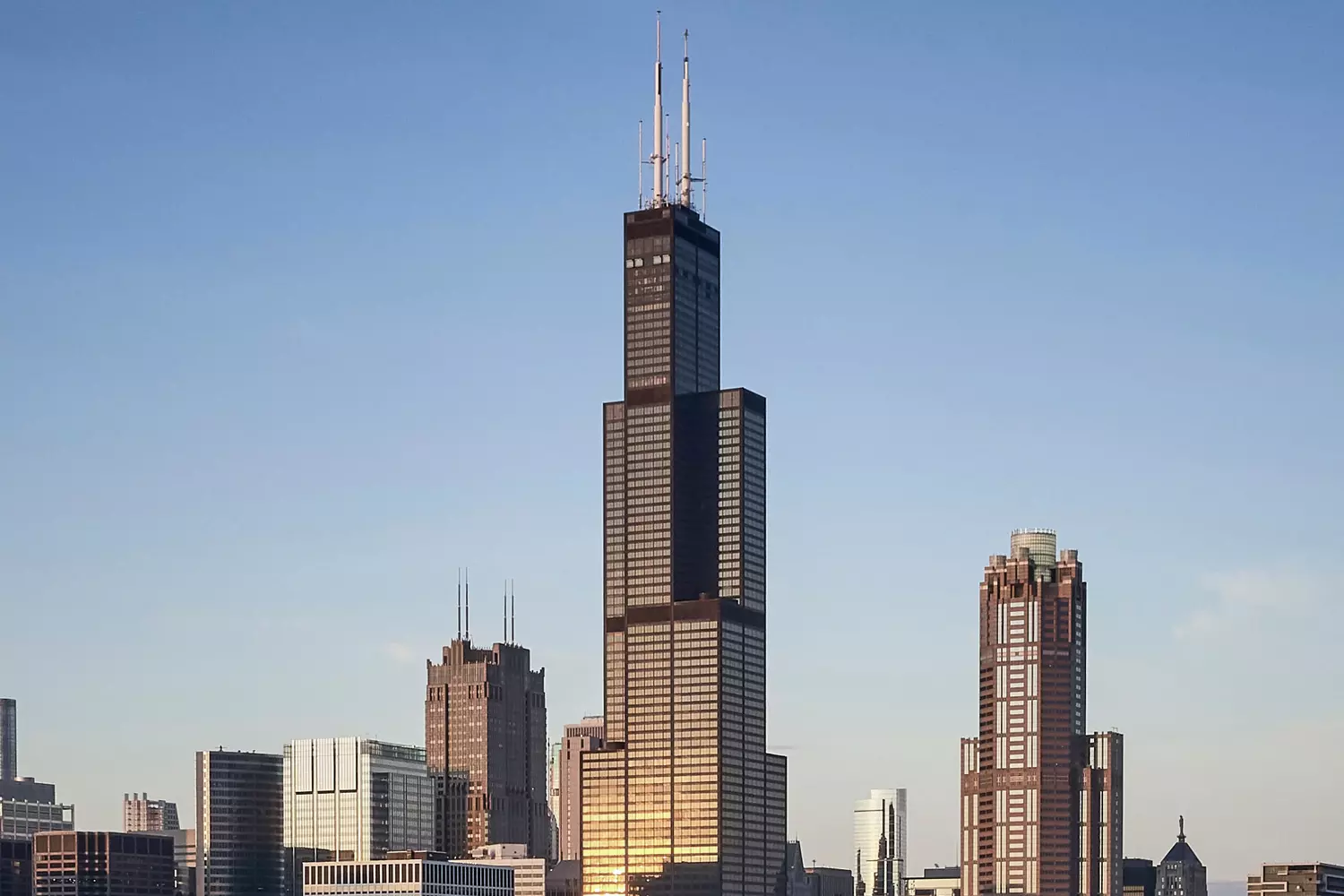
111 West 57th Street "Billionaire’s Spire" (New York) — An Artistic Masterpiece Among Skyscrapers
111 West 57th Street is a true architectural phenomenon that challenges conventional notions of height and elegance. It’s not just a skyscraper, but the world's slenderest residential building, with an incredible height-to-width ratio of 24 to 1. It feels like a gigantic spire reaching into the sky, almost balancing on the very edge.
- Height: 435 meters
- Nickname: “The Billionaire’s Spire”
- Feature: the narrowest residential skyscraper in the world
- 01. History and Concept
The architectural firm SHoP Architects took on a project that combines ultra-modern technology with Art Deco classic style — a hallmark of New York City. The building’s facade is covered with terracotta panels inspired by the legendary skyscrapers of the 1920s and 30s, while also incorporating modern glass surfaces, creating a sense of lightness and airiness.
The slender structure requires advanced engineering solutions. The building’s frame is made of high-strength steel, and to counteract wind loads, a unique damping system — a “pendulum” — is used to reduce sway and make living comfortable even at the top. - 02. What’s Inside?
The building is fully residential and aimed at New York’s elite:
- Penthouses with floor-to-ceiling panoramic windows offering views of Central Park and Manhattan.
- Interiors designed by leading designers using luxurious materials.
- Exclusive amenities: private fitness center, spa complex, conference rooms, and parking.
- 03. Why See It?
- It is an architectural example of how technology and design can coexist harmoniously without losing aesthetics.
- A walk along the “Billionaires’ Row” (57th Street) with a view of this “spire” is a chance to touch modern New York history.
- For those who appreciate height, refinement, and innovation — it’s a true must-see.
Interesting fact: Although the building is incredibly narrow, it contains 60 floors, and its structure balances on a thin foundation — which is why it impresses so much from the street and earns respect from engineers worldwide.
One Vanderbilt — The New Symbol of Modern New York
One Vanderbilt is one of the brightest examples of how a modern skyscraper can become a center of urban life, combining business, transport, and culture. Standing 427 meters tall, the building impresses not only with its size but also with its location: it is just steps away from the legendary New York Central Terminal — Grand Central Terminal.
- Height: 427 meters
- Year built: 2020
- Location: Midtown Manhattan, near Grand Central Terminal
- 01. Architecture and Concept
The project was developed by Kohn Pedersen Fox, with the goal of fitting into the dense urban fabric without overshadowing historic buildings but rather complementing them. One Vanderbilt combines innovative engineering solutions with elegant design.
- The tower of glass and steel seems to grow from the ground, soaring upwards with a dynamic facade reflecting the city and sky.
- Inside are spacious office areas with high ceilings, creating comfort for work in the heart of the metropolis.
- 02. SUMMIT — A Next-Generation Observation Deck
One of the main attractions of One Vanderbilt is SUMMIT, opened in 2021. It is not just an observation deck — it’s an interactive art space:
- Glass platforms extend beyond the building’s edge, allowing visitors to look straight down beneath their feet.
- Mirror installations create the effect of infinity and immersion in the city’s atmosphere.
- The views include Central Park, the Empire State Building, Chrysler Building, and, of course, Grand Central itself.
This space allows you not only to see New York from above but also to feel its spirit and motion.
- 03. Why Visit
- One Vanderbilt is an excellent example of the synthesis of history and modernity, with its proximity to one of the oldest train stations in the country making the place unique.
- SUMMIT offers unforgettable emotions — from the sensation of floating over the city to immersion in an atmosphere of art and innovation.
- A great choice for those wanting to combine a business visit with cultural experiences and panoramic views.
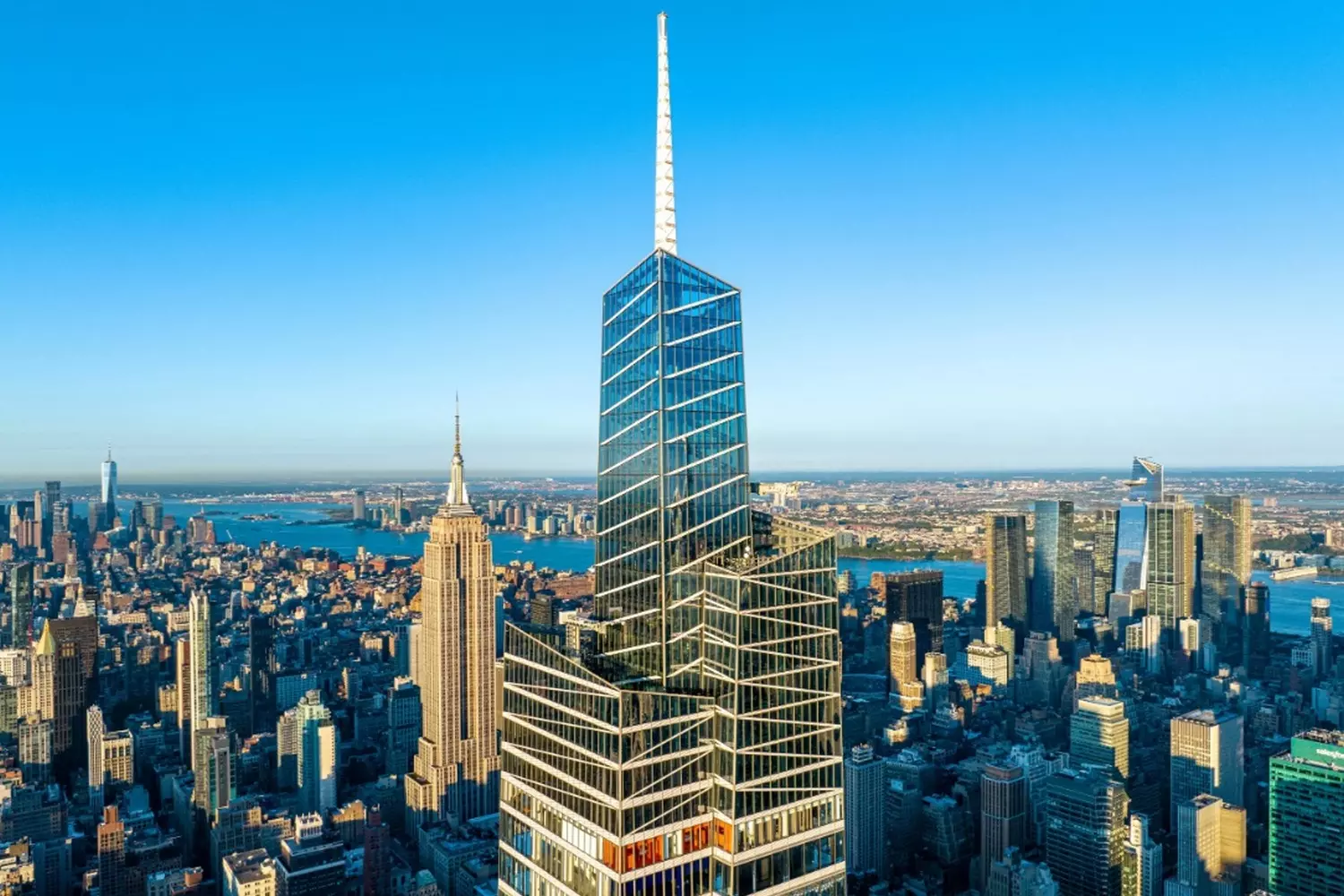
432 Park Avenue (New York) — Monumental Living at Great Heights
432 Park Avenue is one of the tallest residential buildings in New York, standing 425 meters tall. It quickly became a symbol of luxury and a challenge to traditional notions of comfort. This project sparks heated debates: on one hand, apartments costing over $10 million, and on the other — residents’ complaints about technical issues.
- Height: 425 meters
- Purpose: premium-class residential building
- Apartment prices: from $10 million and up
- 01. Architectural Concept
Designed by Rafael Viñoly Architects, the building features an ultra-thin, rectangular form and minimalist design. Its strict geometric silhouette stands out among the more traditional New York skyscrapers, with a facade covered in large square windows creating a sense of light and space.
- The structure includes ultra-strong concrete panels providing stability.
- Despite its impressive height, the building is designed to maximize interior space.
- 02. Contradictions and Nuances
However, not everything is perfect. Some residents report:
- Creaking walls and floors, related to the building’s structural features and natural settling;
- Elevators that sometimes malfunction — an unpleasant surprise for residents accustomed to high standards.
Nonetheless, for many, the benefits outweigh the drawbacks.
- 03. Why It’s Worth Seeing
- 432 Park Avenue is a living example of how architects’ and owners’ ambitions shape the cityscape.
- The upper floors offer breathtaking panoramic views of Central Park, the Statue of Liberty, and Manhattan.
- It’s a place for those ready to embrace height not only physically but as a lifestyle.
Trump International Hotel and Tower (Chicago) — Shine and Reflections on the Chicago Riverbank
Trump International Hotel and Tower is one of Chicago’s iconic skyscrapers, standing 423 meters tall. It combines the functions of a luxury hotel and residential apartments. This skyscraper has become a symbol of the city’s renewed skyline along Lake Michigan, demonstrating how modern architecture can interact with natural surroundings.
- Height: 423 meters
- Use: premium hotel and residential apartments
- Year opened: 2009
- 01. History and Project Changes
Initially, the building was planned to be taller, but after the tragedy of September 11, 2001, the project was revised to comply with new safety and architectural regulations. This adjustment affected the height and some technical features but did not reduce the building’s impressive aesthetic value. - 02. Architecture and Design
The main architectural feature of Trump Tower is its glass facade, which acts like a living canvas, changing colors and shades depending on the time of day and weather conditions. On sunny days, the building shines with a bright blue hue reflecting the sky, while on cloudy days, it takes on calmer gray tones, blending with the urban landscape.
- The facade is made of high-quality glass with a mirror effect that reflects the Chicago River and city skyline.
- The tower’s shape is graceful and modern, with smooth lines that add elegance and lightness to the building.
- 03. What’s Inside?
Trump Tower combines comfortable hotel rooms and luxurious residential apartments with premium amenities:
- The hotel offers world-class services, including restaurants, a spa, fitness center, and conference rooms.
- Residents have access to exclusive services, including personal concierges and security.
- Panoramic views from the windows cover the Chicago River, the city, and Lake Michigan, creating a unique atmosphere.
- 04. Why Visit and See?
- To witness how architecture can harmonize with nature, reflecting and complementing the surrounding landscape.
- To appreciate the play of light on the tower’s glass surface at different times of the day.
- To feel the spirit of Chicago — a city of contrasts where history meets modernity.
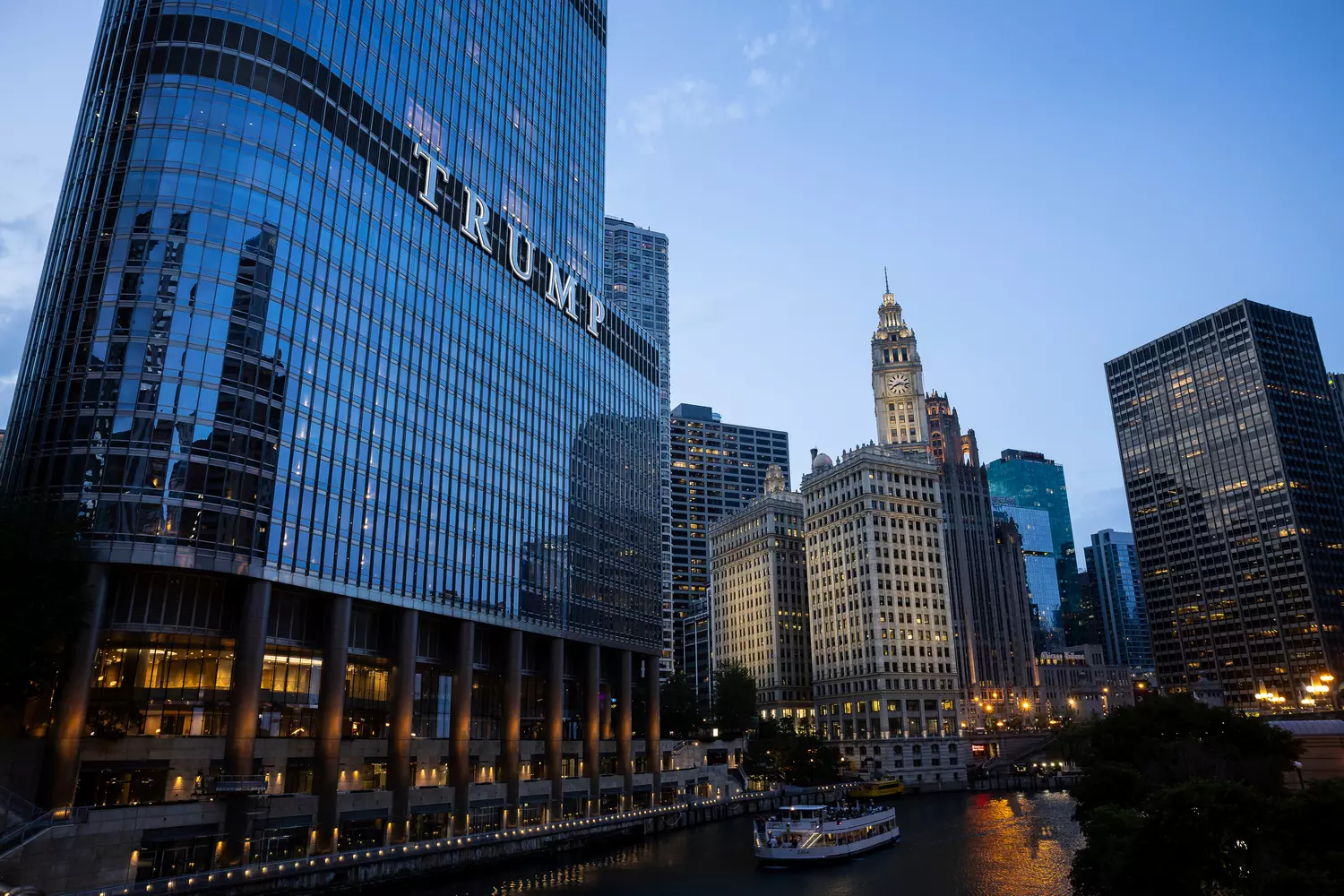
30 Hudson Yards — Soaring Over New York from the Top of Edge
30 Hudson Yards is a vivid symbol of Manhattan's new look, built in 2019 and reaching a height of 387 meters. This skyscraper has become the centerpiece of the modern business district Hudson Yards, but its main pride is Edge — one of the highest observation decks in the world, which literally makes the spirit and heart soar.
- Height: 387 meters
- Year built: 2019
- Feature: Edge observation deck — a glass platform extending over the city
- 01. Architecture and innovations
The building was designed by the architectural firm Kohn Pedersen Fox, which created an elegant, modern tower with a striking glass facade reflecting the sky and city. 30 Hudson Yards fits organically into the large-scale development project of Manhattan’s west side — a district experiencing a true revival.
- The tower combines Class A office spaces and public areas.
- The design meets modern energy efficiency and safety standards.
- 02. Edge — the feeling of flight
The Edge observation deck is not just a viewing platform. It’s a unique experience:
- The glass floor and platform extend beyond the building, creating the effect of floating over the streets of New York.
- The deck is located at about 345 meters above the ground — one of the highest in the Western Hemisphere.
- The panorama covers Central Park, the Hudson River, the Empire State Building, and even the Statue of Liberty.
Here you can literally feel like you’re in the sky, where the city looks toy-like and thoughts feel free.
- 03. Why you should visit
- Edge offers unique photo opportunities — especially at sunset, when the city is bathed in golden hues.
- It’s a chance to see New York from an unusual angle, experiencing a real rush of adrenaline and inspiration.
- For those who appreciate the combination of technology, design, and nature — it’s a must-visit.
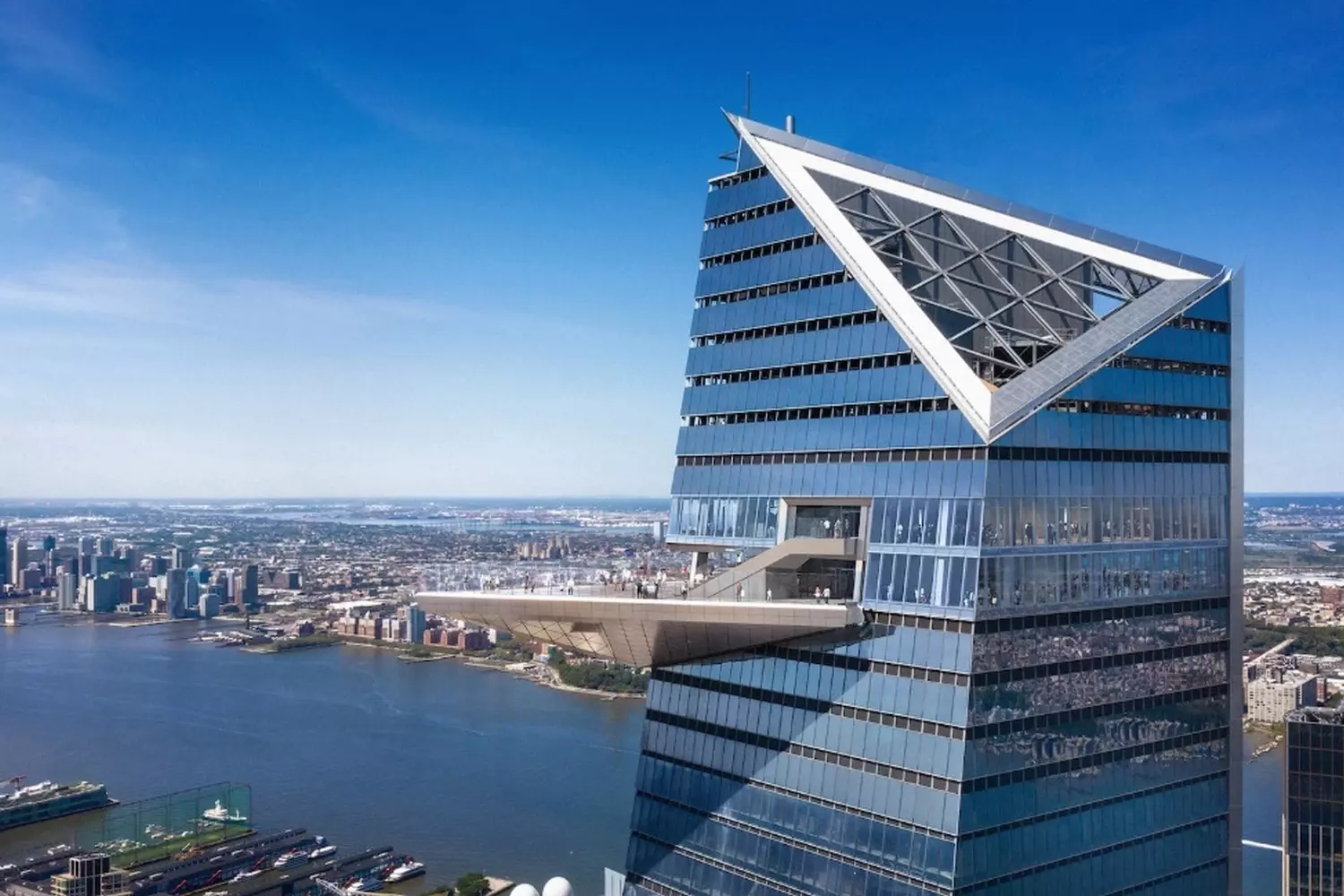
Empire State Building — The Classic That Conquered the Sky
Empire State Building is not just one of the most famous skyscrapers in the world. It is a true symbol of New York, its era, and human determination. Built in record time — just 410 days — the building became a beacon of hope during the Great Depression, when millions of people were searching for light at the end of the tunnel.
- Height: 381 meters
- Year built: 1931
- Status: symbol of New York and architectural classic
- 01. A fast and bold project
Construction started in 1930 and finished in 1931. For that time, the timeline was truly phenomenal: 410 days — from foundation to spire. Over 3,000 workers worked daily during this short period to erect the skyscraper, which remained the tallest building in the world for decades.
- Advanced technologies of the time were used, including a steel frame and elevators capable of transporting people to the upper floors without delays.
- Each construction stage was controlled with military precision — like a large industrial operation.
- 02. Features and attractions
Empire State Building is not only about height but also atmosphere:
- The famous observation deck on the 86th floor and the viewing terrace on the 102nd, offering breathtaking views of Manhattan and surroundings.
- Night after night, the building is illuminated in different colors, symbolizing holidays, events, and important dates.
- The building’s facade is an example of Art Deco, with rich decorations and a recognizable silhouette.
- 03. Why visit
- Empire State Building is a living breath of history and architectural genius.
- Visitors feel the spirit of New York, which was born right here, at the top of the world.
- It’s impossible to imagine a trip to the city without a walk on this giant’s observation deck.
Interesting fact: During construction, not a single fatality was recorded — remarkable for that time and scale of work. This was made possible thanks to strict safety measures, which was revolutionary in construction back then.
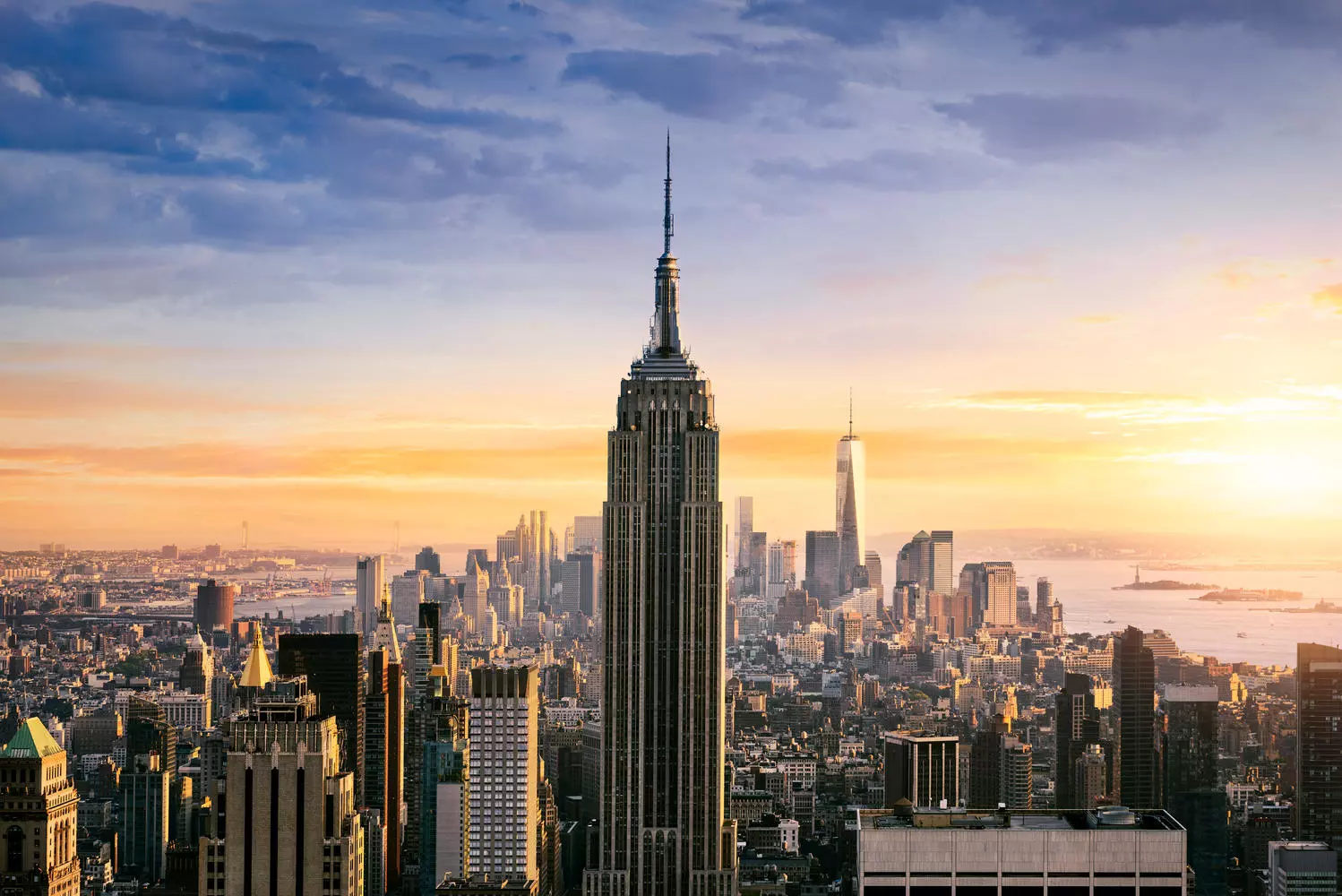
Bank of America Tower — New York’s Green Giant
Bank of America Tower is one of New York's tallest and most environmentally friendly skyscrapers, rising 366 meters high. This modern office center has become a benchmark for sustainable construction, demonstrating how height, style, and environmental care can be combined.
- Height: 366 meters
- Year built: 2009
- Certification: LEED Platinum — the highest level of environmental responsibility
- 01. Green technologies in action
The building is designed to minimize environmental impact and maximize the use of natural resources:
- A rainwater reuse system collects precipitation, filters it, and redirects it for building needs, reducing fresh water consumption.
- Maximum natural lighting thanks to smart architecture and a high-tech glass facade that lets light through but reflects heat.
- Energy-efficient elevators, ventilation systems with heat recovery, and modern air filters are used.
- 02. Architecture and design
The project by Cookfox Architects combines functionality and aesthetics:
- The tower features sharp geometric shapes and a glass facade shimmering with shades of blue and silver.
- The interior spaces are bright and spacious, creating comfortable conditions for work and meetings.
- 03. Usage highlights
Bank of America Tower is a business center housing thousands of employees who value not only office prestige but also its environmental friendliness:
- The building actively supports Bank of America’s sustainable development program.
- It hosts conferences and events dedicated to ecological initiatives and innovations.
- 04. Why you should see it
- It exemplifies how high-rise construction can harmonize with nature and modern environmental standards.
- If you are interested in green architecture and cutting-edge technologies, this place will inspire you.
- Bank of America Tower is not just an office — it’s a step toward the future of cities.
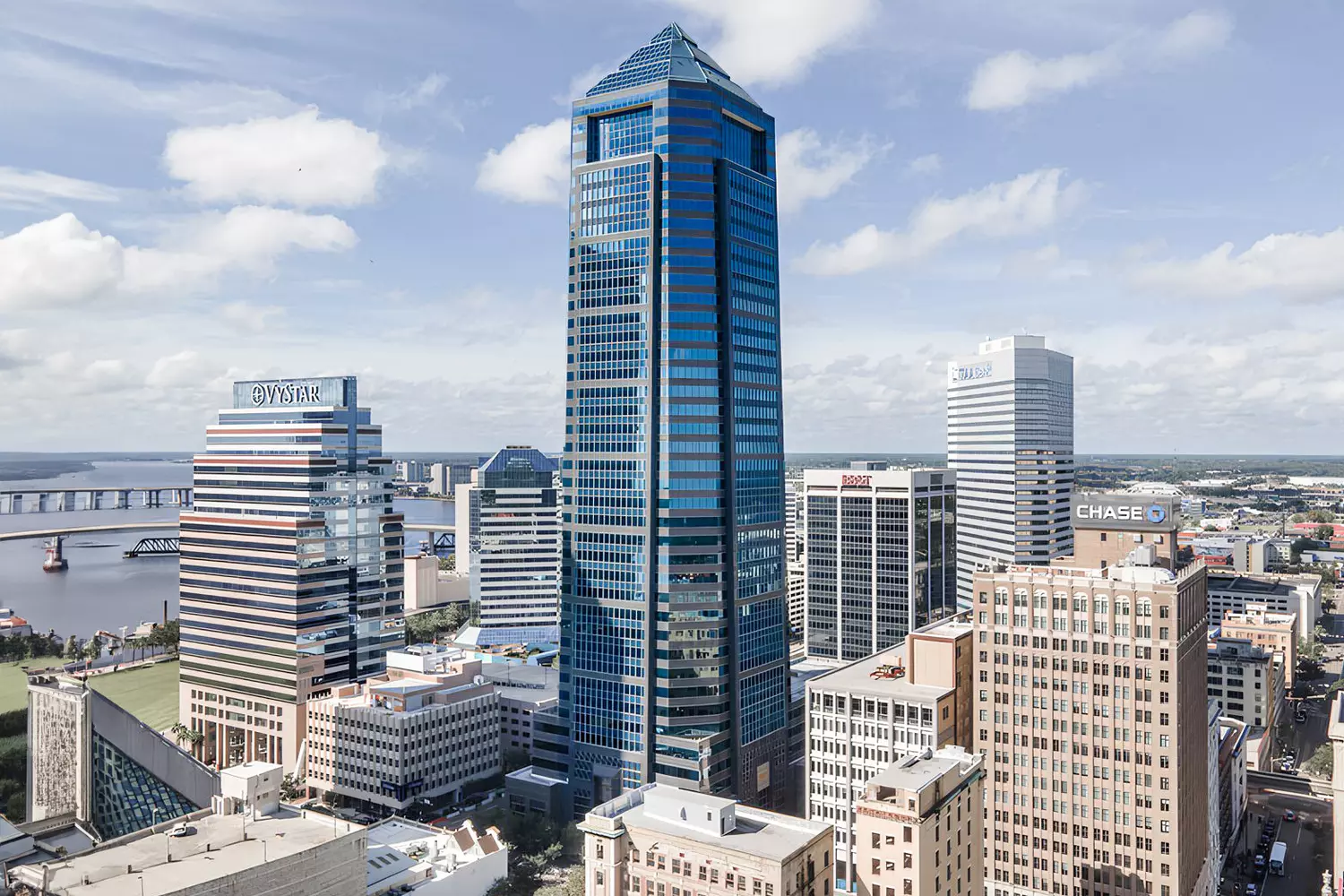
Top 5 Skyscrapers in Miami — Sun, Sea, and Height
Miami is a city where the ocean meets the sky, and architecture transforms into true art. Unlike traditional megacities with concrete jungles, Miami’s skyscrapers are filled with light, air, and tranquility. Here, skyscrapers are not just markers of height on the map, but reflections of a lifestyle where luxury and nature coexist in perfect harmony.
- 01. Panorama Tower — the king of Miami
- Height: 265 meters
- Function: residential complex with offices and a hotel
- Feature: the tallest building in Florida and a symbol of the new Miami
Panorama Tower is a modern mega-complex combining luxurious apartments, office spaces, and a hotel with stunning views of the Atlantic. Its glass and metal facade glistens in the sun, while pools and gyms with breathtaking panoramas are located on the upper floors. On clear days, you can even see the horizon of Cuba from the top floors of Panorama Tower!
- 02. Four Seasons Hotel & Tower Miami — a blend of elegance and height
- Height: 247 meters
- Function: hotel and residential skyscraper
- Feature: one of the first skyscrapers to transform Miami's skyline
This skyscraper is a benchmark of luxury with views of Biscayne Bay and the Atlantic Ocean. It combines the comfort of a five-star hotel with the privacy of elite residences. The architecture is classic yet modern, with large windows and spacious balconies.
- 03. Brickell Flatiron — bold design in the heart of the financial district
- Height: 192 meters
- Function: residential complex
- Feature: reminiscent of the famous Flatiron Building in New York, but with a modern twist
Brickell Flatiron attracts attention with its elegant facade and curved lines. Inside are premium apartments with high comfort, plus pools, fitness centers, and lounge areas. It’s an example of how innovation and style create a unique urban landscape.
- 04. Icon Brickell Tower — a waterfront complex
- Height: 237 meters
- Function: residential and commercial complex
- Feature: three skyscrapers united by a common style and infrastructure
Icon Brickell consists of three high-rise buildings, each unique in design and atmosphere. The complex includes residential apartments, offices, retail spaces, and a private yacht dock marina — all located on the bay shore.
- 05. Jade Signature — luxury and nature in every window
- Height: 224 meters
- Function: luxury residential complex
- Feature: panoramic windows and large balconies with ocean and city views
Jade Signature is the perfect blend of minimalism and comfort. The building is renowned for its eco-friendly architecture and use of natural materials. Every apartment here is a separate world with its own microclimate and a view that won’t leave you indifferent.
Why pay attention to Miami’s skyscrapers?
- These are not just residential buildings — they represent a lifestyle where the sun, sea, and city merge in harmony.
- Miami architects emphasize light and open spaces, unlike the dense, gloomy skyscrapers of other megacities.
- Here, it’s easy to feel the relaxed yet stylish atmosphere of South Florida while staying in the heart of a bustling business life.
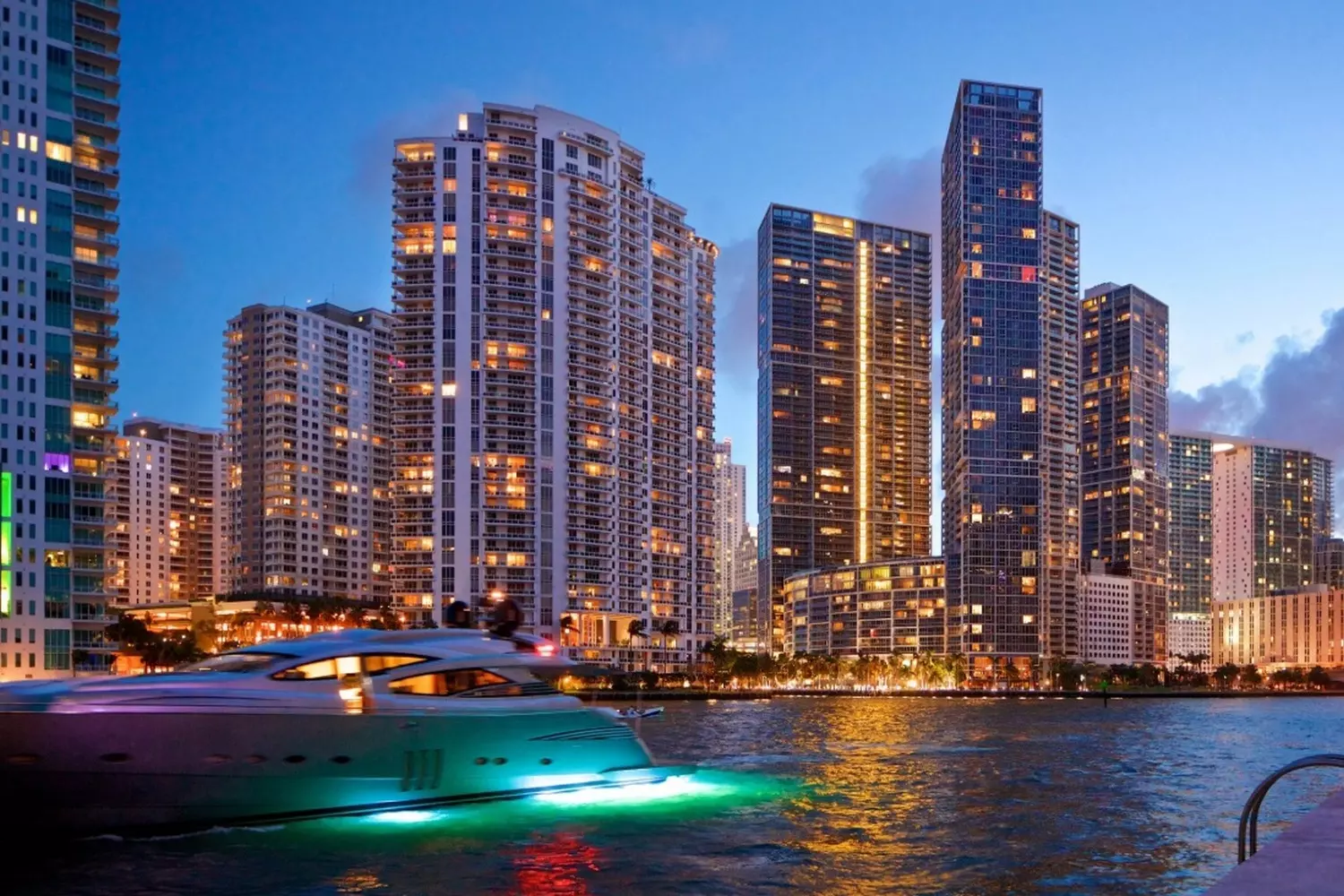
What Unites the Tallest Skyscrapers in the USA? The Voices of Time and the Spirit of the Nation
When you look at these giants — from One World Trade Center to Jade Signature in Miami — you realize they are much more than just steel and glass. Each of them is a living manifesto of an era, reflecting cultural trends and ambitions that have shaped America over centuries.
- 01. Architecture as the language of its time
These buildings "speak" about what was important to society in different periods:
- One World Trade Center — a symbol of resilience and rebirth after the tragedy of 9/11.
- Empire State Building — proof of the human spirit's strength during the Great Depression.
- Bank of America Tower — a challenge of the era of sustainable development and environmental responsibility.
And this is just part of the story told through height, form, and materials.
- 02. The creative teams behind each skyscraper
Skyscrapers are the result of the work of hundreds of people: engineers, architects, builders, historians, and designers. Each project is a complex puzzle where everything matters—from the foundation choice to the tiniest facade details.
- Engineers devise how to withstand wind and earthquakes.
- Architects create images that inspire and speak the language of art.
- Historians help preserve memory and weave it into the modern world.
This teamwork unites professionals for one goal — to create something more than just a building.
- 03. Points of attraction and inspiration
Today, these skyscrapers are the main magnetic centers of cities:
- Millions of tourists come to see the city from above, to feel its scale and spirit.
- They become places for meetings, events, and cultural activities.
- The architecture and engineering of these buildings inspire cities worldwide to build higher, bolder, and more beautifully.
- 04. America and height: love and life
"America is not afraid of height — it lives in it" — these are not just words, but a philosophy embodied in every steel frame and glass facade. For the USA, height is a challenge and an opportunity, a way to express oneself and one's dreams. It is a culture that teaches to look up and strive higher, without fear of risks and changes.
These skyscrapers are living stories that can be read with the eyes and felt with the heart. And that is what truly makes them great.
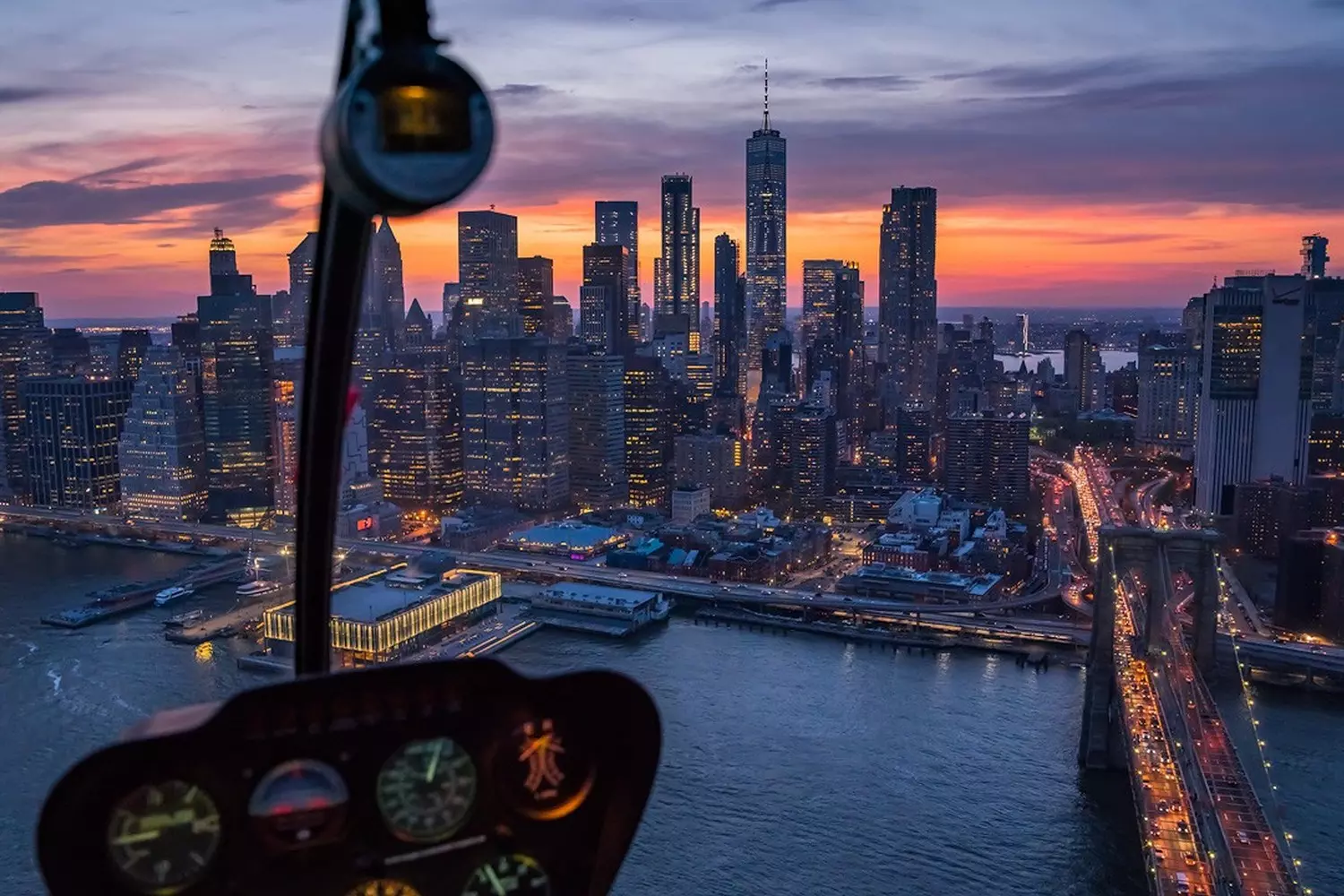
Incredible Skyscrapers of the USA: 20 Facts That Will Amaze You
American skyscrapers are not just steel giants but true symbols of engineering genius, ambition, and even curiosities. Behind their facades lie stories of clever tricks, deadly construction technologies, and miraculous rescues. From secret spires to "cursed" statues — here are the most unexpected facts about US skyscrapers that will change your perception of them.
- 01. Chrysler Building: how a hidden spire stole the title
In 1930, there was a fierce race for the title of the tallest building in the world. Architect William Van Alen secretly assembled a 38-meter spire inside the under-construction Chrysler Building and installed it in 90 minutes, outrunning the competitor — 40 Wall Street. That’s how New York got a new record holder. - 02. "The Billy Penn Curse" and a 10-centimeter statue
For a long time, no Philadelphia sports club won championships after a skyscraper surpassed the height of the city hall with the statue of the city’s founder in 1987. To lift the "curse," in 2008, a miniature copy of the statue was placed on the new building’s roof — and that same year, the Philadelphia Phillies won the World Series. - 03. Empire State Building: saved by the wind and the elevator killer
In 1979, a woman who jumped from the 86th floor was blown back onto the ledge one floor below by a gust of wind and survived. And in 1945, elevator operator Betty Lou Oliver survived a fall from the 75th floor after a collision with a B-25 bomber — a record listed in the Guinness Book. - 04. The invisible skyscraper: AT&T bunker without windows
The building 33 Thomas Street in New York is a 167-meter brutalist telephone exchange. It was designed without windows to withstand a nuclear strike and can operate autonomously for two weeks under radiation conditions. - 05. How Mohawk Indians fearlessly built skyscrapers
During the construction of the Empire State Building, 80% of the high-steel workers were Mohawk Native Americans, genetically unafraid of heights. They ate and slept on the beams, and the construction proceeded at a record pace — 4.5 floors per week. - 06. "Lunch atop a Skyscraper": the photo that was almost banned
The legendary photo of workers eating lunch on a beam over Manhattan (1932) was initially attributed to an unknown author. Later it was revealed to be the work of Charles Ebbets. On the monument inspired by the photo, one worker was removed — because he held a bottle of whiskey. - 07. The invisible skyscraper: the secret 13th floor
Many American skyscrapers skip the 13th floor in numbering due to superstition. But in some buildings (like the Woolworth Building) it exists, just hidden from public view. It houses technical rooms and was historically used for secret meetings and even illegal gambling. - 08. Trump Tower in Chicago: the "airport killer"
When the Trump International Hotel & Tower was completed in 2009, pilots at O’Hare Airport began complaining about navigation interference. It turned out the skyscraper reflected radio signals, disrupting aircraft courses. The Federal Aviation Administration (FAA) even required special beacons on the roof to prevent disasters. - 09. The skyscraper built in 36 hours
In 2012, a 27-story residential complex was erected in Manhattan in just 1.5 days! Modular construction technology allowed the building to be assembled like a constructor. Though it still took six more months to finish the interiors. - 10. Empire State Building: secret UFO base?
In the 1950s, a secret military radar was installed on the roof to track Soviet bombers. But rumors said it was actually searching for UFOs. The equipment was removed in the 1970s, but enthusiasts still believe something is hidden there. - 11. The skyscraper that "breathes"
The Comcast Center tower in Philadelphia is equipped with a "smart" facade: 25,000 sensors regulate temperature by opening and closing ventilation panels. The building saves 40% energy and even changes the glass tint depending on the weather. - 12. Freedom Tower: hidden protection against terrorist attacks
One World Trade Center was built with unique protection: its base is a 4-meter thick concrete "bunker," surrounded by a "belt" of steel beams able to withstand a plane crash. Elevators and stairs are protected by ultra-strong walls, and ventilation is equipped with filters against chemical attacks. - 13. The skyscraper that "dances" in the wind
432 Park Avenue in New York is one of the slenderest skyscrapers in the world. In strong winds, its top can sway up to 1.5 meters! To prevent panic among residents, engineers installed special damping systems that reduce vibrations. - 14. Secret pools at 300 meters high
At 111 West 57th Street (one of the world’s thinnest skyscrapers), a private pool with panoramic views of Manhattan is hidden on the 32nd floor. Only a select few — penthouse owners worth $50+ million — can access it. - 15. The skyscraper built... downward
Salesforce Tower in San Francisco extends 30 meters underground — deeper than the height of a 10-story building! Its underground floors house water reservoirs for earthquakes and secret technical rooms. - 16.The elevator that moves... sideways
At JP Morgan Chase Tower (Houston), there is a unique elevator that not only moves up and down but also horizontally between two towers. It is the only elevator of its kind in the US! - 17. The skyscraper that "shoots" lightning
Willis Tower in Chicago is a true "giant lightning rod." During storms, it is struck by up to 50 lightning bolts a year! Special cameras capture these strikes — the sight is breathtaking. - 18. The building that can "disappear"
The Spiral in New York (built in 2022) has unique glass facades that change transparency depending on lighting. By day it gleams; by night it "vanishes" into the darkness. - 19. Willis (Sears) Tower: "floating" floors
This Chicago giant has "floating" floors that can be moved! They were built for future office rearrangements, but the idea proved too expensive. Now these empty spaces are used for technical needs. - 20. "The cursed" skyscraper with a ghost
The Dakota in New York (where John Lennon lived) is considered one of the most mystical buildings. Workers claim to have seen the ghost of a woman in a Victorian dress on the upper floors. In the 1960s, a mysterious suicide occurred here — a man jumped from a window, but the door to his room was locked from the inside.
Skyscrapers are not just buildings but true "cities within cities" with their own laws, secrets, and technologies. These stories prove that skyscrapers are more than steel and concrete. They are symbols of human daring, curiosities, and triumph over gravity.
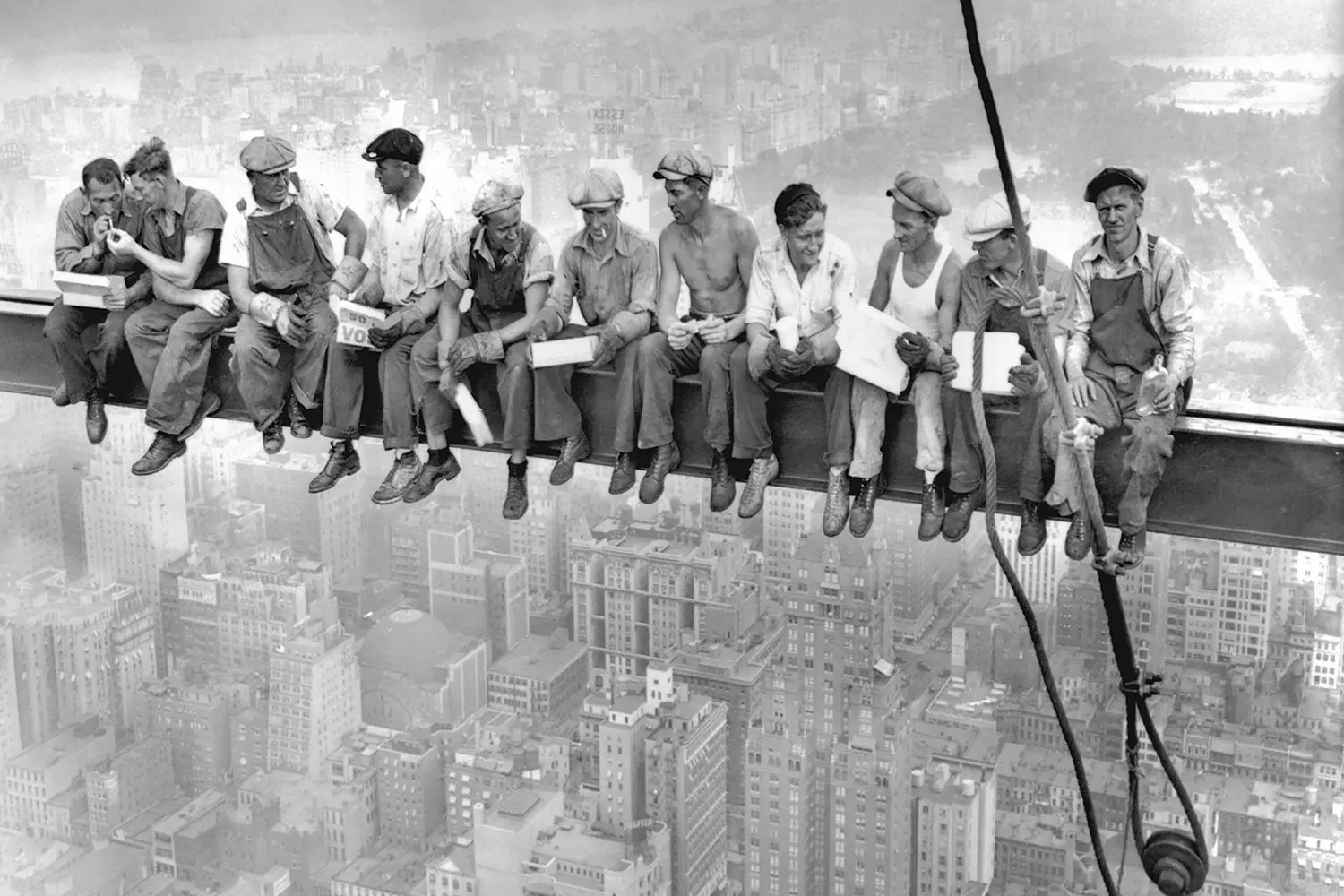
See America from Above with American Butler
Skyscrapers are not just about height. They are about economy, culture, and politics. When you enter such a building, you don’t just look down. You look deep inside — into how American society is structured. Where millions live, work, and dream.
Want more than just ticking off a checklist? American Butler organizes tours of skyscrapers in New York, Chicago, and other cities:
- With a personal guide who knows not only the facts but also the souls of these buildings;
- With transfer service, no queues, and at a comfortable pace;
- With a route tailored for you: architecture, history, lifestyle — choose your focus.
Visit the America that inspires.














